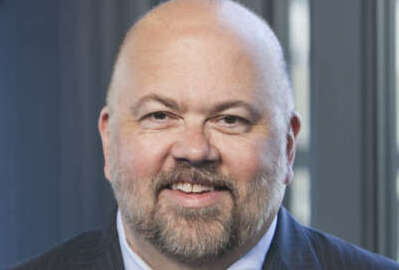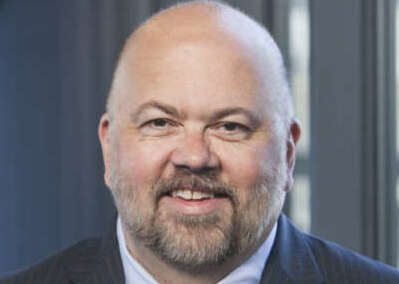
What is a CHCO and why do we have them?
Federal workers have heard the term “chief human capital officer” or CHCO, for 15 years, but not everyone knows what a CHCO is and why they were created.
This column was originally published on Jeff Neal’s blog, ChiefHRO.com, and was republished here with permission from the author.
Last week, Office of Personnel Management Director Jeff Pon sent a memo to agency heads outlining his intent to restore “the strategic management of human capital to the importance assigned to it by Congress when it enacted the Chief Human Capital Officers (CHCO) Act, codified at 5 USC Ch. 14.”
Director Pon went on to say “In order to effectively support the U.S. Office of Personnel Management (OPM), I believe the role of the CHCO should be assigned to an individual at a very senior-level who has the trust of the Secretary or agency head and serves as an integral part of the leadership team. The CHCO should share accountability with the other members of the leadership team for the agency’s bottom line performance, mission results, accountability, and best use of taxpayer money. As the OPM Director and CHCO Council Chair, I intend to consult with CHCO Council members periodically on issues facing the civil service. Therefore, I strongly encourage agency heads to ensure that the designated CHCO for his/her agency meets the criteria above.”
Federal workers have heard the term “chief human capital officer” or CHCO, for 15 years, but not everyone knows what a CHCO is and why they were created. Here is a little background on those questions.
What is a CHCO? The Chief Human Capital Officers Act of 2002, enacted as part of the Homeland Security Act of 2002, established the role of the chief human capital Officer (cHCO) in the federal government. First proposed in 2001 by the late Sen. George Voinovich (R-Ohio), the CHCO Act was intended to give people issues the attention they deserved. Voinovich, a former Cleveland mayor and Ohio governor, called public employees “the A Team” and felt much more could be done on workforce matters. I testified before the Senate Homeland Security and Governmental Affairs Committee and can attest to the senator’s great interest in and knowledge of civil service issues. His executive experience as a mayor and governor taught him the importance of the workforce in getting anything done. The CHCO Act required 24 agencies to establish CHCO positions to (1) advise and assist the head of the agency and other agency officials in carrying out the agency’s responsibilities for selecting, developing, training, and managing a high-quality, productive workforce in accordance with merit system principles; (2) implement the rules and regulations of the president and the Office of Personnel Management and the laws governing the civil service within the agency; and (3) carry out such functions as the primary duty of the chief human capital officer. It also identifies six required functions of CHCOs:
- setting the workforce development strategy of the agency;
- assessing workforce characteristics and future needs based on the agency’s mission and strategic plan;
- aligning the agency’s human resources policies and programs with organization mission, strategic goals, and performance outcomes;
- developing and advocating a culture of continuous learning to attract and retain employees with superior abilities;
- identifying best practices and benchmarking studies, and
- applying methods for measuring intellectual capital and identifying links of that capital to organizational performance and growth.
What is not a CHCO? HR directors for bureaus, components and other agency subunits are not CHCOs. Because the role of a CHCO is defined by statute, only those positions covered by the CHCO Act are actually CHCOs.
Why Would OPM Director Pon feel it is necessary to remind agencies about the role of CHCOs and who should be appointed? The director’s experience as a CHCO influenced his decision. Having been “in the trenches” he understands the role and what it takes to succeed in it. My experience as a member of the CHCO Council when I was CHCO for the Department of Homeland Security convinced me that not every department or agency on the CHCO Council had adhered to the intent or the letter of the law with respect to the designation of a CHCO. For example, some agencies designated the Assistant Secretary for Administration or someone in a similar role as the CHCO. Those folks, no matter how capable they might be, generally did not have much knowledge of human capital matters in the federal government. Nor did they “carry out such functions as the primary duty of the Chief Human Capital Officer” as the law requires. Even now, CHCOs do not always report to the agency head or deputy. Nor are they always part of the agency’s most senior leadership team. In some cases, the CHCO has a “seat at the table” but the seat is a high chair. Director Pon’s memo is advising agencies to give their CHCO a real seat at the table, and ensure they are “an integral part of the leadership team.”
Should CHCOs be political appointees? I get this question often. There is no right answer. When I was CHCO at DHS, I was a political appointee. When I retired, I advised the secretary to convert the position to a career job. She initially said no, saying she wanted someone like me (meaning an appointee) in the job. It was only when I explained that what she liked about how I did the job was a result of my experience as a career SES running human resources for DLA, that she agreed to make the job career. The real requirement for a CHCO is that s/he know something about the work. A political appointee who understands federal HR can be an excellent CHCO. A career SES who knows nothing about it can be a terrible CHCO. Agencies should assign someone they trust to the CHCO role and that person should have the expertise to carry out the six statutory functions of the job.
Renewing the intent of the CHCO Act is a good thing. It can bring more attention to workforce issues and it can make it more likely that OPM will get the feedback from agencies that it needs to refine its programs and to reform the civil service. I have suggested in the past and still believe that we should do even more, including reforming the CHCO Act. We learned from our experience with the Clinger-Cohen Act (which required agencies to create chief information officer positions) that having the title is not enough. A chief is not a chief if s/he does not have some clout to go with it. Congress recognized and addressed that problem with CIO positions when it passed the Federal Information Technology Acquisition Reform Act (FITARA). FITARA gives the CIO budget authority and much greater oversight of the execution of agency information technology projects, even when the work is being carried out in a bureau or other subordinate agency.
Next Steps. The CHCO Act is much more like Clinger-Cohen than FITARA. It established some high-minded goals and got the ball rolling, but it does not give the CHCOs the authority they need to really be Chiefs. If we want to accelerate improvements in human capital management across government, Congress should reform the CHCO Act with FITARA-like legislation that would:
- Require that CHCOs have substantive human capital management experience and day-to-day responsibility for leading the human capital organization. If the CHCO is to carry out its statutory responsibilities, both are required.
- Grant the CHCO authority, in partnership with the CIO, to determine all HR IT requirements in departments and agencies. The number of HR IT systems is mind-boggling. When I was CHCO at DHS, we found the department had more than 400 HR IT systems. Other agencies have similar problems with duplicative and wasteful systems.
- Grant the CHCO Authority to determine how the department/agency will deliver HR services. Most CHCOs do not have the authority to determine the service delivery model their organization will use. The money and the authority rest with the bureaus, agencies, administrations and other subunits. That means shared services are not the norm, costs are higher than they should be, and services are not always delivered effectively.
- Provide that CHCOs have approval authority for selections of bureau/component HR Directors. Some departments already grant this authority to their CHCO. It helps ensure selection of individuals who will carry out the department’s human capital strategy.
- Require each agency to either have (a) a department/agency-wide Human Capital Strategic Plan signed by the agency head, or (b) incorporate human capital planning as a significant element of the department/agency strategic plan. Agency strategic plans will be more likely to lead to real changes if they are backed up by the strategies to ensure the right people are in place to execute them.
- Require agencies/departments to establish and execute workforce planning for mission critical occupations (MCOs). Too often, there is no planning for MCOs or the plans are “shelfware” that are created and then ignored.
The federal government has more than 2 million employees. Even if the most extreme proposals to reduce the federal workforce were enacted, we would still have more than 1.5 million. The work that those folks do is critical to national and homeland security, health care and benefits for veterans, social security, medicare and countless other services the American people rely upon every day. Effective programs for hiring, training and retaining that workforce are critical to accomplishing those missions.
Jeff Neal is a senior vice president for ICF and founder of the blog, ChiefHRO.com. Before coming to ICF, Neal was the chief human capital officer at the Homeland Security Department and the chief human resources officer at the Defense Logistics Agency.
Copyright © 2025 Federal News Network. All rights reserved. This website is not intended for users located within the European Economic Area.



